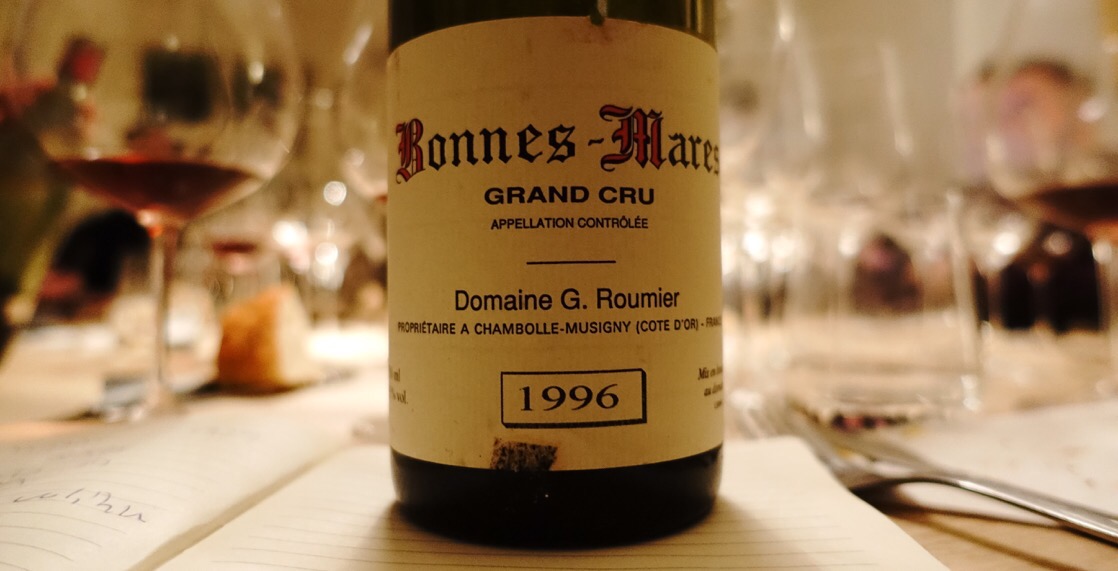The Georges Roumier Bonnes Mares is perhaps the most famous and acclaimed wine from this large Grand Cru.
In a sense the Roumier is the Bonnes Mares benchmark wine – a wine that sort of defines the terroir in more than one sense, and also the variation in the expression of the terroir.
While other great wines are made on Bonnes Mares – the Roumier is certainly amongst the best in my view – a wine I have followed over more than 20 years – a wine that rarely if ever disappoints – and a wine that needs a long time to unfold it’s full potential.
Domaine Georges Roumier a bit of background
Domaine Georges Roumier is one of the top estates in Chambolle Musigny, and one of the true stars of Burgundy.
Domaine Georges Roumier was founded by Georges Roumier (1898 – 1965) in 1924 – when he married Geneviéve Quanquin (1896 – 1977) on November 14th 1924.
Georges Roumier was from Dun-les-Places in Morvan … and not from a vigneron family, but his wife was from Chambolle-Musigny, and the Quanquin family had a fine collection of vineyards in the Chambolle Musigny appellation.
Over the years the Roumier estate expanded the vineyard holdings and even so the holdings in the Bonnes Mares.
The Roumier holdings in Bonnes Mares
Bonnes Mares is sort of the “dark side” of Chambolle-Musigny, a vineyard that represents a hybrid between Chambolle and Morey – a vineyard that sometimes is somewhat overlooked when compared with the mighty Musigny.
In the Roumier case it’s however a bit different, as their Bonnes Mares is more floral and minerally expressive than many other wines made from this large Grand Cru.
Bonnes Mares is 15.05 ha – hence almost 40% larger than Musigny – and is located in both Chambolle Musigny and Morey-Saint-Denis. The main part is in Chambolle-Musigny – north of the village and Les Fuées – and only 1.52 ha is located in the Morey appellation – just south of Clos de Tart.
Domaine Georges Roumier currently have 1.89 ha of Bonnes Mares located in different sections of Bonnes Mares. Normally the Roumier holdings are quoted as 1.39 ha, but a new section has been included recently – as an investor according to Claude Kolm has acquired a 0.50 section and Chistophe Roumier now has these plots in metayage.
You need to login as a Premium subscriber to read the rest of this article. If you are not a Premium Subscriber, use the subscribe function and sign-up.



 - A true vin d’émotion – a Burgundy of passion
- A true vin d’émotion – a Burgundy of passion - A truly hedonistic wine – lively and enjoyable
- A truly hedonistic wine – lively and enjoyable - A vivacious wine for pure indulgance
- A vivacious wine for pure indulgance - A potential vin d´émotion - frais et léger
- A potential vin d´émotion - frais et léger
Outstanding article!
Again the terror!
In Sonoma County we have the Summa Vineyard,Old and New and the soil profile in both is different as well as the the resulting Pinot Noirs..
The same thing in the Hirsch Vineyards for each of their plots of Pinot Noir
Many thanks for this article.
My maths on the holdings works out slightly differently from yours though. I have plot 367 as 0.1738 ha and plots 467-470 collectively as 0.7133 (formerly a single plot, #133) rather than 0.7212.
If my readings are correct (and I haven’t yet asked the domaine to confirm them) then you do get the exact total of 1.3919
Jasper
Hi Jasper,
Thanks a lot for the comment ..
My numbers comes from the official French cadastre – there are as you mention some slight differences to your numbers – the 467-470 are 0.1803 ha each – yielding 0.7212 ha. So I guess there are different sources … what is your source?
I will however try to explore further – although the difference is rather minimal.
Best regards
Steen Öhman
Steen, you wrote: ” In the very northern part we have one plot (1) “, but I guess you are referring to the plot 1 in the very southern part.
Werner – You are correct – and the article has been corrected.
Best regards
Steen Öhman
Great content, thank you for sharing Steen.